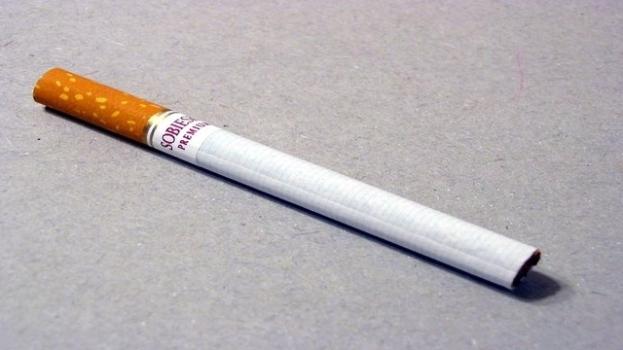A modern cigarette is composed of a small portion of processed tobacco leafs with various additives rolled in a thin paper cylinder usually containing a filter on one its ends, intended for smoking. The filter is made with 95% cellulose acetate and the thin paper is glued together with PVA glue. The modern cigarettes started being widely consumed in the mid-20th century but its earliest forms can be tracked to Mexico and Central America in the 9th century.
Cigarette smoking is addictive, due to the chemical element Nicotine that is present in all tobacco products, and causes serious health risks. Statistics show that about 50% of smokers die with tobacco-related diseases and lose on average 14 years of life. Its negative health effects to that bystanders that inhale its smoke regularly, known as second-hand smokers, led to cigarette smoking being banned in many closed work and public places. In many countries, the advertising of tobacco products is outlawed and the cigarette packets contain strong visual messages about its potential health risks and harm. Bhutan is currently the only country in the world that has completely prohibited tobacco products, including cigarettes.
The last studies on its consumption showed that approximately 1.1 billion people smoke cigarettes regularly, although the numbers are declining in the developed nations. In the developing world, cigarette smoking is still rising. The World Health Organization points China, USA, Japan, Russia and Indonesia as the main consumers and found that it's a habit more prevalent in men than women.
More recently the market has seen the introduction of the electronic cigarette, also known as e-cigarette, which is a battery powered vaporizer that feels similar to tobacco smoking and although it doesn't contain any tobacco, it uses the nicotine from tobacco plants. They are also addictive but its health risks and harm for the smokers are still widely uncertain. E-cigarette 'smoking' is currently allowed even in closed work or public spaces.






